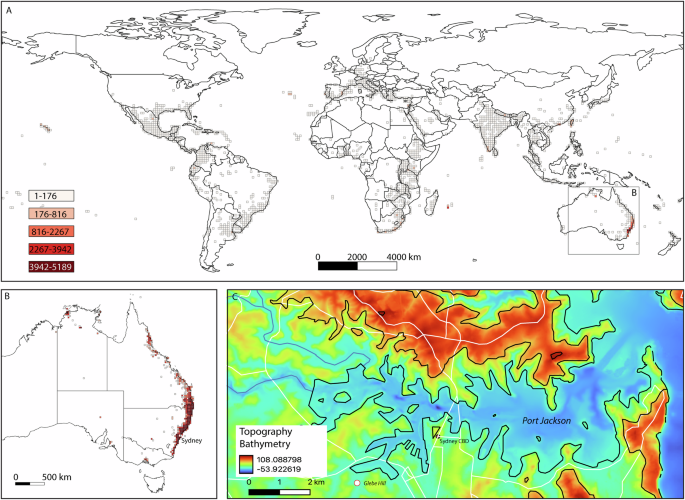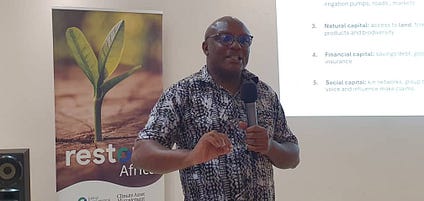Report on SpaceX South Texas Expansion and Sustainable Development Goals
Executive Summary
This report examines the conflict between SpaceX’s infrastructure expansion in South Texas and environmental preservation mandates, analyzed through the framework of the United Nations Sustainable Development Goals (SDGs). The company’s proposal to create a mitigation bank to offset wetland destruction highlights a critical challenge in balancing industrial innovation (SDG 9) with the protection of coastal and terrestrial ecosystems (SDG 14 and SDG 15).
SDG 9: Industry, Innovation, and Infrastructure vs. Environmental Constraints
SpaceX is undertaking significant infrastructure development in South Texas to support its Starship rocket program, a key project for future space exploration, including NASA’s lunar missions. This rapid development directly aligns with the objectives of SDG 9, which encourages building resilient infrastructure and fostering innovation. However, this industrial growth is constrained by the presence of federally protected coastal wetlands.
Key Development and Environmental Impact Points
- Infrastructure Expansion: SpaceX requires expansion of its launch facilities to advance the Starship program.
- Environmental Impact: The proposed expansion would destroy approximately 8.5 acres of emergent wetlands and 9.65 acres of wind-tidal flats.
- Regulatory Oversight: The U.S. Army Corps of Engineers enforces a “no net loss” policy, requiring companies to offset any wetland destruction.
SDG 14 (Life Below Water) and SDG 15 (Life on Land): The Ecological Stakes
The wetlands targeted for development are critical ecosystems that support significant biodiversity, directly implicating SDG 14 and SDG 15. These goals focus on the conservation of marine and terrestrial ecosystems, respectively.
Ecological Significance of the Affected Area
- Wind-Tidal Flats: These unique habitats support blue-green algae, which is a foundational food source for invertebrates.
- Biodiversity Support: The ecosystem is crucial for various shorebirds, including the threatened piping plover, making its preservation essential for halting biodiversity loss (a key target of SDG 15).
- Coastal Protection: Wetlands serve as natural buffers, contributing to the resilience of coastal communities against environmental shocks, a principle embedded in SDG 11 (Sustainable Cities and Communities).
SDG 17: Partnerships for the Goals – A Contested Mitigation Strategy
To comply with regulations, SpaceX has proposed creating the Rockhands Mitigation Bank, a novel approach that raises questions about the effectiveness of public-private partnerships in achieving sustainable outcomes. The proposal involves preserving a large tract of land to generate “credits” that offset current and future development.
Analysis of the Proposed Mitigation Bank
- Proposal Details: SpaceX intends to preserve 1,050 acres, primarily consisting of 952 acres of wind-tidal flats, to compensate for the destruction of 18.15 acres at the launch site.
- Argument for Preservation: SpaceX contends that preservation is the most viable option, citing the technical difficulty and lack of established methods for restoring wind-tidal flats. The company also argues the land is at risk of future development, making its preservation a net positive.
- Criticism and “No Net Loss” Policy:
- Environmental groups and academic experts argue that a preservation-only approach fails to meet the “no net loss” standard, as it does not create new or restore degraded wetlands to replace those being destroyed.
- This results in a net reduction of functional wetland area, undermining the core principles of SDG 14 and SDG 15.
- Critics also note a potential conflict of interest, as SpaceX’s own entity, Starbase, would oversee the conservation of the mitigation bank while simultaneously being the primary driver of development in the region.
Conclusion: The Challenge of Reconciling Development with Sustainability
The SpaceX case in South Texas serves as a critical example of the inherent tensions in pursuing the Sustainable Development Goals. While the company’s work advances innovation and infrastructure (SDG 9), its current approach to environmental mitigation is viewed by stakeholders as insufficient to protect vital coastal and terrestrial ecosystems (SDG 14, SDG 15). The ongoing review by the U.S. Army Corps of Engineers will determine whether this model of development, which prioritizes preservation over restoration, can be considered a sustainable path forward.
Analysis of Sustainable Development Goals in the Article
1. Which SDGs are addressed or connected to the issues highlighted in the article?
- SDG 9: Industry, Innovation, and Infrastructure: The article focuses on SpaceX’s expansion, which involves building “cavernous rocket-building facilities” and a larger launch pad. This directly relates to developing infrastructure for a high-tech industry.
- SDG 11: Sustainable Cities and Communities: The development is part of the “growing city of Starbase,” highlighting the link between industrial growth and urban expansion and the need to manage its environmental footprint.
- SDG 14: Life Below Water: The article discusses the destruction and conservation of “coastal saltwater wetlands” and “wind-tidal flats,” which are critical coastal ecosystems that fall under the purview of this goal.
- SDG 15: Life on Land: The wetlands are described as a unique ecosystem and a “wildlife habitat” crucial for species like the “threatened piping plover.” The debate over land use, habitat destruction, and conservation directly connects to this goal.
- SDG 17: Partnerships for the Goals: The issue involves multiple stakeholders, including a private company (SpaceX), government agencies (U.S. Army Corps of Engineers, Texas Parks and Wildlife Department, EPA), environmental groups (Save RGV), and academic institutions (Rice University, Texas A&M). This complex interaction highlights the need for partnerships to achieve sustainable development.
2. What specific targets under those SDGs can be identified based on the article’s content?
- Target 9.1 (under SDG 9): “Develop quality, reliable, sustainable and resilient infrastructure… to support economic development and human well-being.” The article discusses the development of launch infrastructure by SpaceX, but the core conflict lies in making this development “sustainable” by addressing its environmental impact on wetlands.
- Target 11.4 (under SDG 11): “Strengthen efforts to protect and safeguard the world’s cultural and natural heritage.” The unique wind-tidal flats ecosystem, described as “one of the last remaining large, privately owned tracts of land in the South Bay,” can be considered a form of natural heritage that is at risk from development.
- Target 14.2 (under SDG 14): “By 2020, sustainably manage and protect marine and coastal ecosystems to avoid significant adverse impacts… and take action for their restoration.” The entire article revolves around the management and protection of coastal wetlands from the adverse impacts of SpaceX’s launch site expansion.
- Target 15.1 (under SDG 15): “By 2020, ensure the conservation, restoration and sustainable use of terrestrial and inland freshwater ecosystems and their services, in particular forests, wetlands…” This target is directly relevant as the central issue is the destruction, conservation, and potential restoration of wetlands.
- Target 15.5 (under SDG 15): “Take urgent and significant action to reduce the degradation of natural habitats, halt the loss of biodiversity and, by 2020, protect and prevent the extinction of threatened species.” The article mentions the habitat is “crucial for hungry shorebirds, including the threatened piping plover,” linking the development directly to the protection of threatened species and their habitats.
3. Are there any indicators mentioned or implied in the article that can be used to measure progress towards the identified targets?
- Area of wetlands impacted: The article provides specific figures that can be used as indicators. For instance, “SpaceX has received permission to fill roughly 5 acres of wetlands” and the new proposal would “destroy 8.5 acres of emergent wetlands and 9.65 acres of wind-tidal flats.” This directly measures the extent of habitat degradation.
- Area of land protected or conserved: Progress on conservation can be measured by the amount of land set aside. The article states SpaceX has previously offset destruction by “donating about 80 acres to the Texas Parks and Wildlife Department” and the proposed mitigation bank “would conserve 1,050 acres.”
- Implementation of environmental policies: The application and effectiveness of the U.S. Army Corps of Engineers’ “no net loss” policy is a key indicator. The debate on whether a “preservation-only” approach meets this policy’s standard is a measure of its implementation.
- Status of threatened species: The mention of the “threatened piping plover” implies that monitoring the population and health of this species in the area would serve as a bio-indicator for the overall health of the ecosystem and the success of mitigation efforts.
4. Summary Table of SDGs, Targets, and Indicators
| SDGs | Targets | Indicators |
|---|---|---|
| SDG 9: Industry, Innovation, and Infrastructure | 9.1: Develop quality, reliable, sustainable and resilient infrastructure. | Acreage of land developed for industrial infrastructure (e.g., launch pads, facilities). |
| SDG 14: Life Below Water | 14.2: Sustainably manage and protect marine and coastal ecosystems. | Area of coastal wetlands and wind-tidal flats destroyed (e.g., “8.5 acres of emergent wetlands and 9.65 acres of wind-tidal flats”). |
| SDG 15: Life on Land | 15.1: Ensure the conservation, restoration and sustainable use of… wetlands. 15.5: Reduce the degradation of natural habitats… and protect… threatened species. |
|
| SDG 17: Partnerships for the Goals | Enhance policy coherence for sustainable development. | Application and interpretation of environmental regulations like the “‘no net loss’ policy” by government agencies in partnership with private entities. |
Source: yahoo.com






